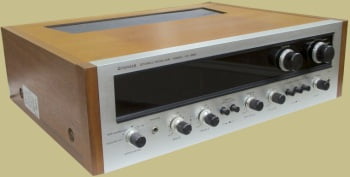
Introduced in 1980, the Pioneer SX-3600 is a stylish receiver incorporating aspects of both digital and analog engineering. It was in the middle of the Pioneer performance ladder, and retailed for an affordable $275, but still produced a respectable 30 watts per channel. Most of the SX-3600’s were made in Korea.
Other receivers in the Pioneer lineup were the:
- SX-3900 $800 120wpc
- SX-3800 $500 60wpc
- SX-3700 $375 45wpc
- SX-3600 $275 30wpc
- SX-3500 $225 20wpc
- SX-3400 $174 15wpc
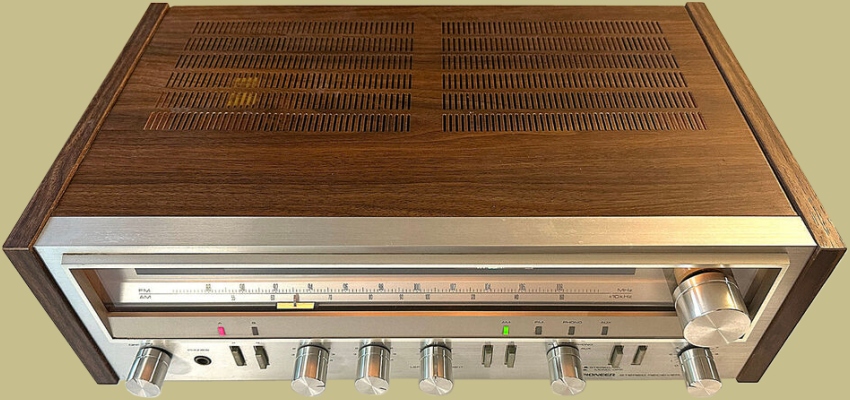
Front Panel
The Pioneer SX-3600 receiver has a clean, uncluttered front panel design that aligns with Pioneer’s focus at the time on minimalism and simplicity. They referred to it as Smart Styling. The SX-3600 also came with a “walnut-like” metal top and walnut grained vinyl side panels.
The main analog tuning dial for FM and AM stations is wide, tilted back, and easy to read. The tuning knob is large and smooth. The control buttons and knobs have a sturdy, high-quality feel.
Six LED function indicators are located on the slanted center panel above the selector for Speaker A/B, AM, FM, PHONO, and AUX.
Tape monitor switches (with back-panel input/output terminals) permit you to record to and play back up to two stereo decks. Dubbing may be accomplished by connecting one deck to the AUX inputs and recording to the other.

The SX-3600 also has controls for:
- Loudness and Balance (with center click).
- Mode (Stereo/Mono).
- Stereo FM indicator.
- Speaker selection (System A, B or both on/off) with red indicators.
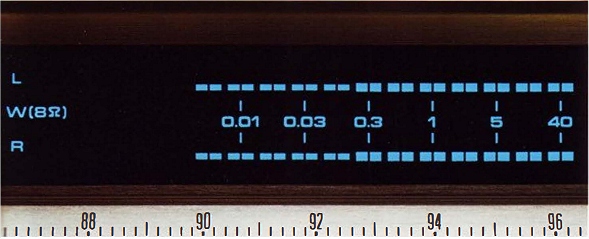
Fluroscan Meter
The Pioneer SX-3600 receiver has a unique meter called the “Fluroscan” power output meter that shows precisely how much amplifier power is being delivered to the speakers at any given moment. This helps optimize performance and prevent distortion.
The blue Fluroscan power output meter is a bar graph display with 12 separate light segments per channel, allowing very accurate power measurements. The technology behind it uses specialized integrated circuits to log and display the power output readings on the front panel. One IC controls the driving of each bar graph scale, while another handles logarithmic compression of the output readings. The end result is a meter that reacts faster and provides clearer visibility compared to common LCD or LED displays used by other receiver brands at the time.
A key benefit of the Fluroscan Meter is its ability to briefly retain peak power readings before decaying back down. This brief “hold time” of the maximum reading allows your eyes to track dynamic changes in power output that align with what you’re hearing from the music. Overall, the meter provides both form and function – a cool, blue graphical display that gives you greater control over your listening experience.
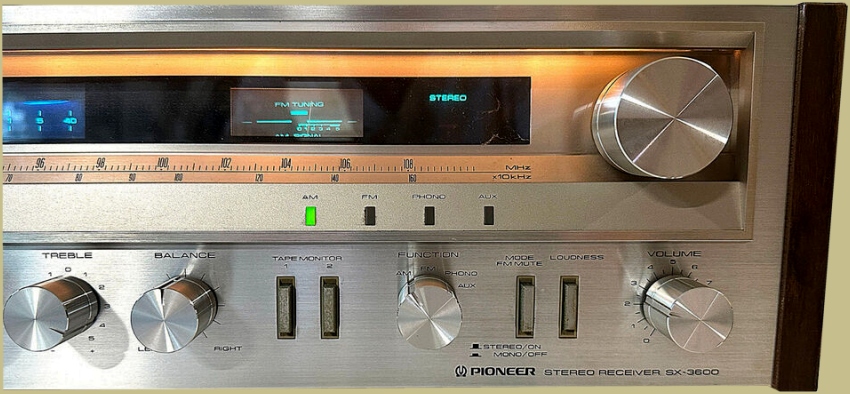
Tone Controls
The Pioneer SX-3600 takes a simple approach to tone adjustment. Rather than adding a separate tone control amplifier stage, it uses a simple CR filter circuit incorporated within the negative feedback loop of the power amplifier itself.
This method, known as “Power NFB,” allows you to tailor the tonal balance as needed to compensate for positive or negative acoustic effects introduced by your listening room environment and speaker setup. For example, if you have an overly “bright” or bass-light room, you can adjust the SX-3600’s bass and treble controls to restore a smooth, neutral tonal character at your listening position.
The advantage over conventional complex tone control circuits is better efficiency and lower distortion. By keeping things simple within the power amp feedback, the receiver avoids unnecessary additional amplifier stages that can degrade sound quality. This helps maintain a clean, accurate sonic character when you need to tweak the bass or treble for proper room acoustics.
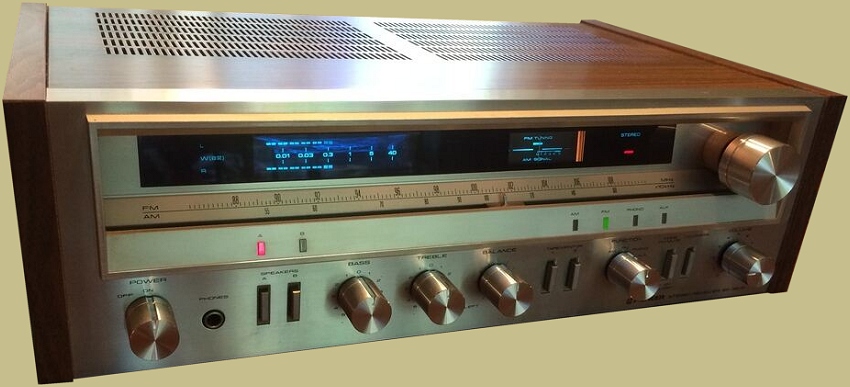
Tuner
Pioneer used quality components in the tuner section of this receiver to get crisp, clear FM reception and accurate stereo separation.
The “front end” of the tuner utilizes a field-effect transistor (FET) amplifier and a mixing transistor boosts the signal while minimizing distortion. This stage, critical for good FM performance, allows fine-tuning capability down to very weak stations.
The signal then passes through two ceramic filters in the intermediate frequency (IF) section. These remove noise and interference, allowing only the clean station signal through. A transistor amp further builds up the signal strength before stereo decoding.
For precise stereo demodulation, the SX-3600 uses a specialized integrated circuit (IC). This gives the SX-3600 excellent channel separation and stability when extracting the left and right audio signals. Another IC handles pilot signal removal – this cleans up the final audio output headed to your speakers.
The carefully chosen parts in the FM processing path enable the receiver to pluck even weak stations from the airwaves, then accurately decode the stereo audio for an enjoyable listening experience.
The Tuning/Signal meter is a combination meter with accurate indication of center-channel for FM and signal strength for AM.
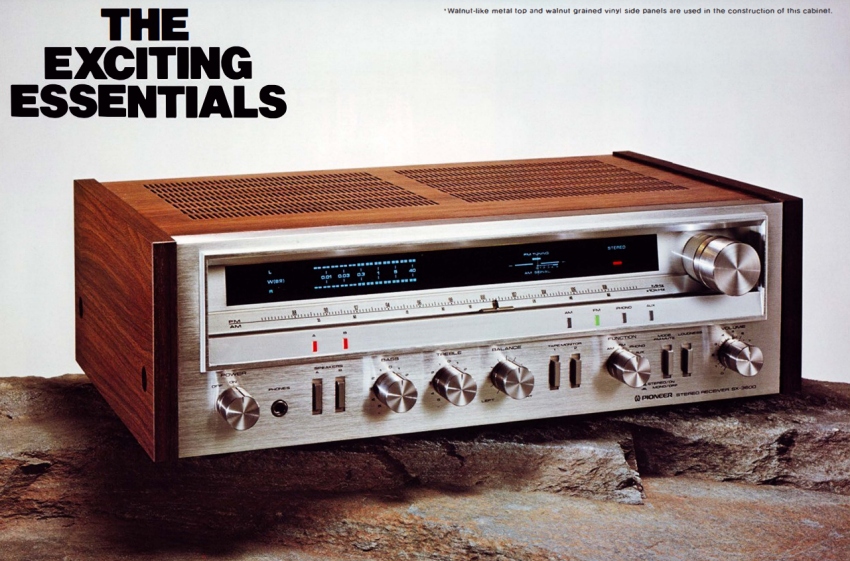
Specifications
AMPLIFIER SECTION
Continuous Power Output is 30 wpc at 8 ohms from 20 Hz to 20,000 Hz
Total Harmonic Distortion: No more than 0.05% (20Hz to 20,000Hz, 8 ohms. from AUX)
Intermodulation Distortion: No more than 0.05% (50Hz: 7,000Hz =4:1, 8 ohms. from AUX)
Damping Factor (20 to 20,000Hz, 8 ohms): 35
Input Sensitivity/Impedance:
- PHONO: 2.5mV/50k ohms
- AUX: 150mV/50k ohms
- TAPE PLAY 1: 150mV/50k ohms
- TAPE PLAY 2: 150mV/50k ohms
PHONO Overload Level: 140mV (1kHz, T.H.D. 0.1%)
Output Level:
- TAPE REC 1: 150mV
- TAPE REC 2: 150mV
- SPEAKERS: A, B, A+B
- HEADPHONES: Low impedance
Frequency Response:
- PHONO (RIAA Equalization): 30 to 15,000Hz +0.3dB
- AUX, TAPE PLAY: 10 to 50,000Hz +0.5dB, -3dB
Tone Control:
- BASS: +/- 8dB (100Hz)
- TREBLE: +/- 8dB (10kHz)
- Loudness Contour: +/- 6dB (100Hz) (Volume control set at -40dB position)
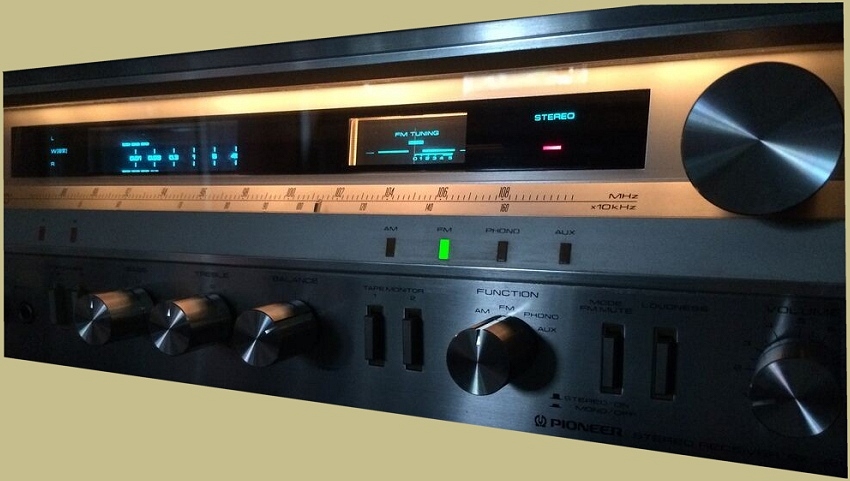
FM TUNER SECTION
Usable Sensitivity: Mono: 11.2dBf (2.0V)
50dB Quieting Sensitivity.
- Mono: 16.1dBf (3.5uV)
- Stereo: 374Bf (39uV)
Signal-to-Noise Ratio:
- (at 65dBf): Mono: 78dB
- (at 85dBf): Stereo: 72dB
Distortion (at 65dBf): 1 kHz: 0.1 % (mono), 0.15% (stereo)
Frequency Response: 20 to 15,000Hz + 0.5dB, -1.0dB
Capture Ratio: 1.0dB
Spurious Response Ratio: 65dB
Image Response Ratio: 65dB
IF Response Ratio: 90dB
AM Suppression Ratio: 55dB
Muting Threshold: 19.2dBf
Stereo Separation: 40dB (1kHz), 35dB (30Hz to 15kHz)
Antenna Input: 300 ohms balanced, 75 ohms unbalanced
Dimensions: 17 11/16(W) x 5 9/16(H) x 12 1/16(D) inches (450(W) x 142(H) x 306(D) mm)
Weight: 18 lb. 1 oz. (8.2kg)
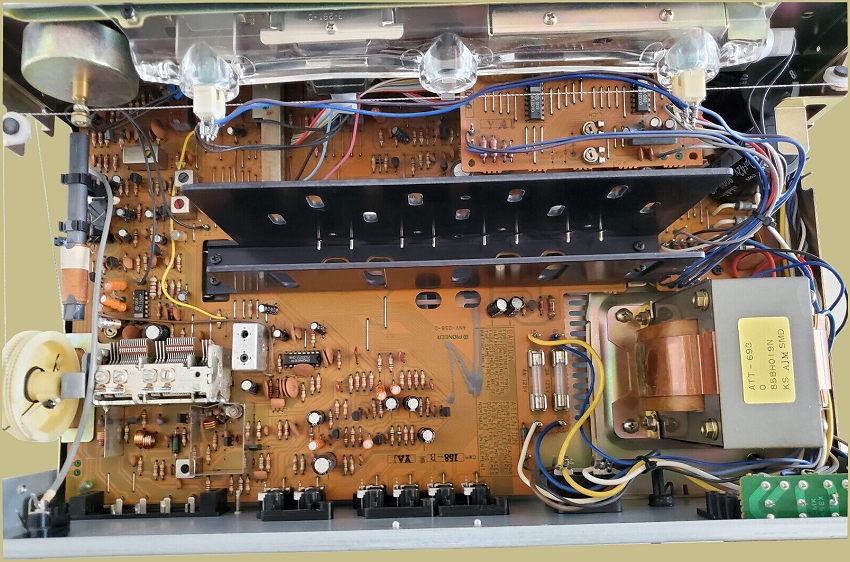
Amplifier
The Pioneer SX-3600 uses a proven, reliable internal amplifier design that provides a clean 30 watts of power per channel. While less costly than some other high-end receivers offered at the time, Pioneer decided that its time-tested circuit would prove more reliable and avoid exaggerated frequency effects or added noise.
It starts with a differential input stage coupled with a current mirror to accurately translate the incoming signal. This hands off to a pre-driver with special “bootstrapping” to keep distortion negligible. Finally, the push-pull power amplification uses selected transistors in a balanced configuration for excellent left/right channel separation.
The power supply starts with a heavyweight EI-core transformer matched to large filter capacitors that smoothly feed current on demand. This quality foundation supplies all internal sections properly, keeping noise and distortion low while preserving musical dynamics and frequency extremes. Stereo separation also remains precise across the audio range.
The end result is an amplifier with very good performance and power to spare without frills or gimmicks. Pioneer relied on proven high-current designs rather than flashy features.
One issue with the SX-3600’s is that the power regulator transistors are notorious for cold solder joints. Years of getting hot and then cooling down can crystalize the solder. A quick resoldering of the board can fix many issues.
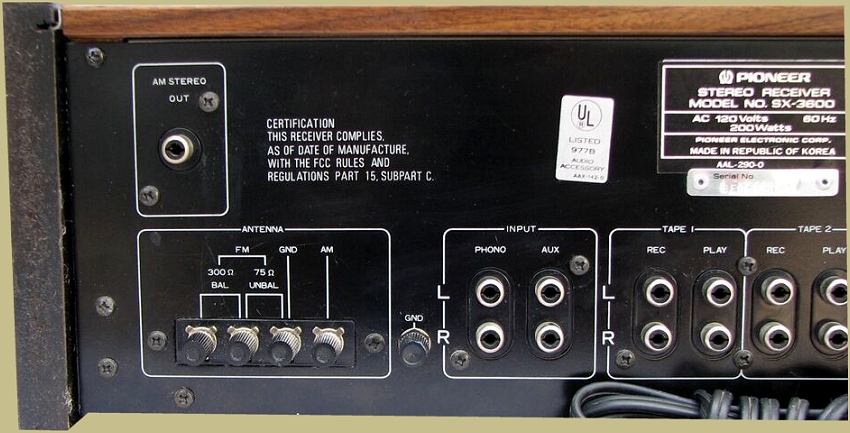
Reviews
It is a simple but absolutely great sounding receiver that does pack a little punch.
Recap it and let it sing. Gobs of clean power and all discrete (no awful power packs/ICs in power stage). Plus, the fluroscan is awesome and cool. FM tuner incredible.
It sounds better than expected with nice stereo separation & fidelity for such a small receiver.
Back Panel
The back panel of the SX-3600 has inputs for Phono and Aux as well as for two tape decks. There are output terminals for two sets of speakers. There are also two AC outlets (one switched and one not).
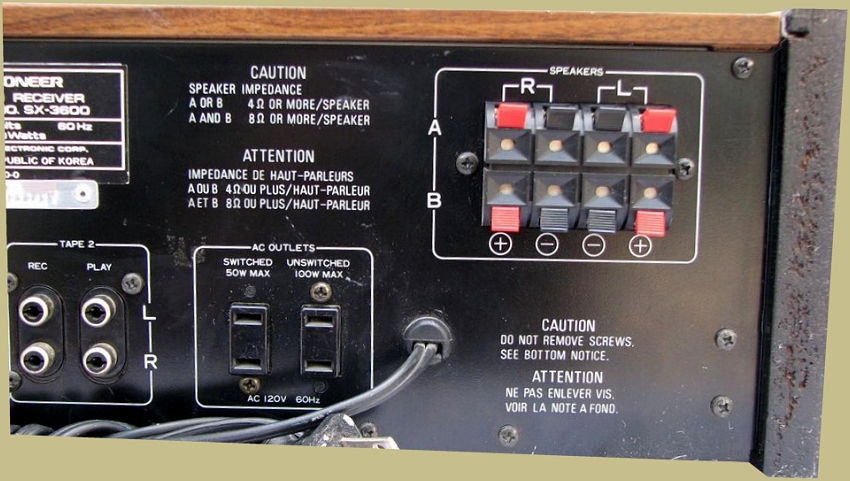
Overall, the Pioneer SX-3600 is a great receiver. It was made just before everything went digital so still has an analog dial and a mix of knobs and push buttons. The beautiful blue Fluroscan meter is a key selling point too. It is powerful enough for a moderately sized room or garage and performs at a very high level if everything is functioning properly. It’s also a very stylish receiver and would look good in any vintage audio setup.
